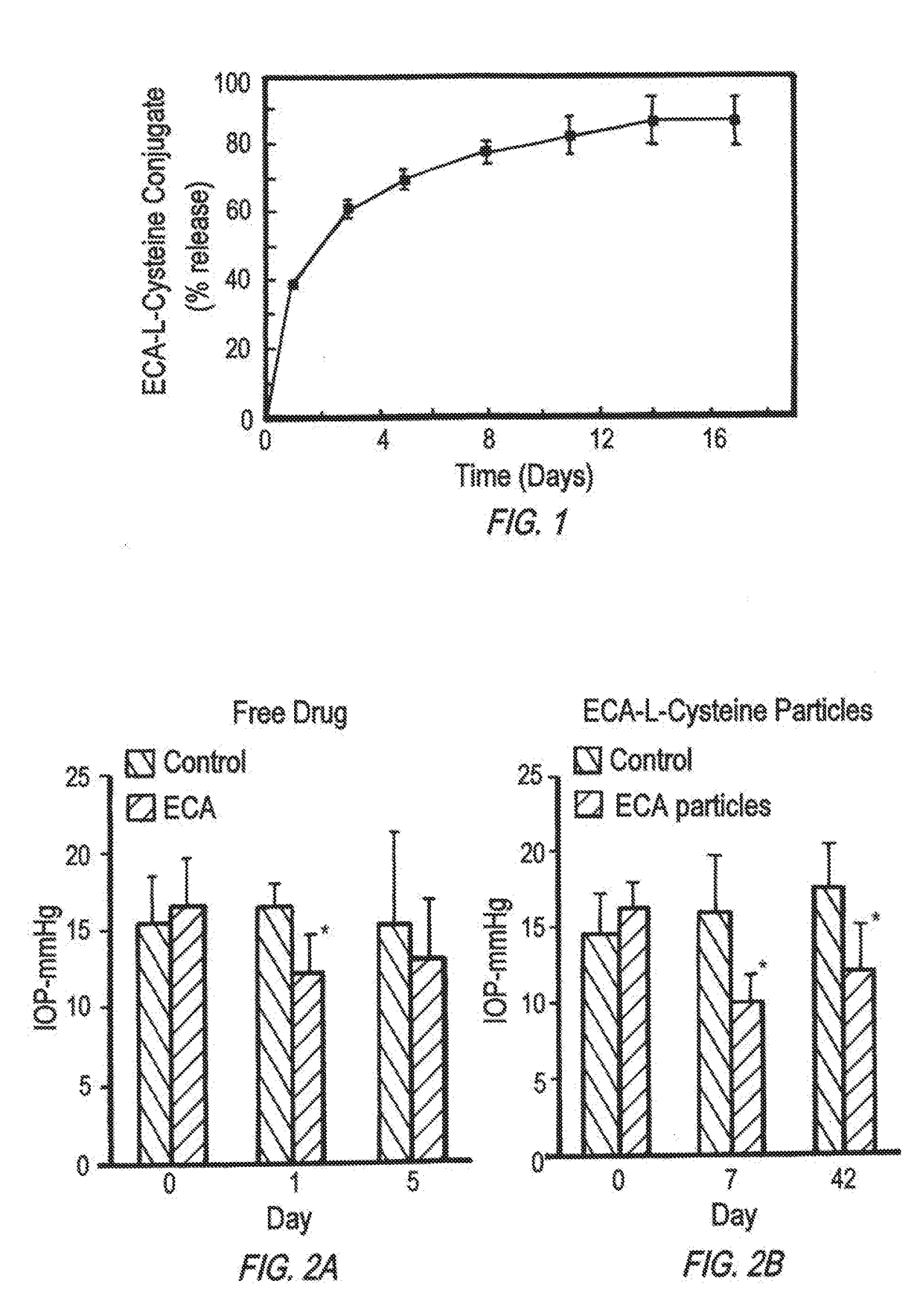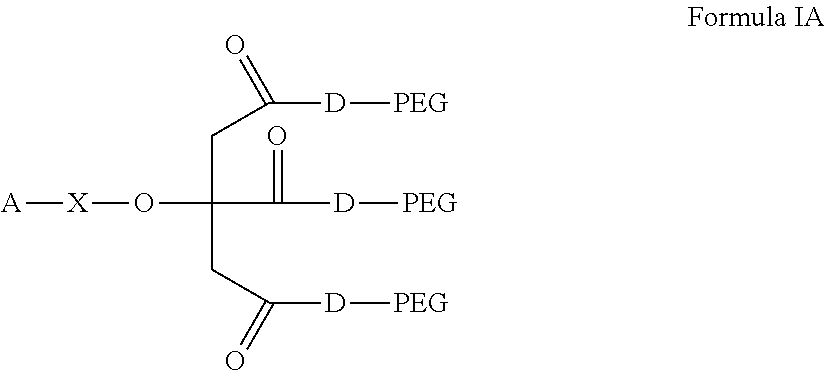Compositions for the sustained release of Anti-glaucoma agents to control intraocular pressure
a technology of intraocular pressure and compounding, which is applied in the direction of drug compositions, sense disorders, organic active ingredients, etc., can solve the problems of eye drop administration, eye drop loss and potentially blindness, and unsatisfactory eye drop administration, so as to avoid unacceptable cytotoxicity levels, prolong release, and increase ocular pressure
- Summary
- Abstract
- Description
- Claims
- Application Information
AI Technical Summary
Benefits of technology
Problems solved by technology
Method used
Image
Examples
example 1
on of ECA-L-Cysteine
[0245]100 mg ethacrynic acid (ECA) was added to 3 mL water and the pH was adjusted to 5.0 until the ECA was dissolved. After dissolution, the pH was adjusted to 7.0. 39 mg L-cysteine was dissolved in 3 ml double-distilled water and the pH was adjusted to 7.0. The two solutions were mixed with gentle rolling for 1 hour, after which the solution was lyophilized.
example 2
on of the PEG3-PSA (PEG-PSA) Prepolymer
[0246](Polyethylene glycol)3-co-poly(sebacic acid) (PEG3-PSA) or (Polyethylene glycol)-co-poly(sebacic acid) (PEG-PSA) was synthesized by melt condensation. Sebacic acid (SA) was refluxed in acetic anhydride to form a sebacic acid (SA) prepolymer (Acyl-SA). Polyethylene glycol (PEG3) was prepared by mixing CH3O-PEG-NH2 (2.0 g), citric acid (26 g), dicyclohexylcarbodiimide (DCC; 83 mg) and 4-(dimethylamino)pyridine (DMAP, 4.0 mg) which were added to 10 mL methylene chloride, stirred overnight at room temperature, then precipitated and washed with ether, and dried under vacuum. Acyl-SA (90% w / v) and PEG3 ((10% w / v) (or PEG) were polymerized at 180° C. for 30 minutes. Throughout the polymerization, a strong nitrogen sweep was performed for 30 sec every 15 min. At the end of the reaction, the polymers were allowed to cool completely and dissolved in chloroform. The solution was precipitated dropwise into excess petroleum ether. The precipitate was ...
example 3
on of ECA-L-Cysteine Polyanhydride Microspheres
[0247]120 mg of PEG-PSA or PEG3-SA was dissolved in 1.2 mL of dichloromethane and 30 mg of ECA-L-cysteine in 1.2 mL of DCM, 300 ul methanol and 300 ul DMSO. The two solutions were mixed together and stirred for one hour and poured into a 40 mL 1% Polyvinyl alcohol (PVA, 250000 Mw, 88% hydrolyzed, Sigma) solution, homogenized 1 min (Silverson Homogenizer, model L4RT, Chesham Bucks, England) at 3500 rpm, and then stirred for 3 hours for dichloromethane to evaporate.
[0248]The structure of PEG-SA-ECA-L-Cysteine polymer was verified by 1H NMR using a Bruker Avance 500 MHz FT-NMR spectrometer (Madison, Wis.) and Fourier transform infrared spectroscopy (FT-IR) using a Perkin Elmer 1600 series Fourier transform infrared spectrometer (KBr plate) (Wellesley, Mass.).
[0249]The particles were collected by centrifugation and washed in distilled water. Microparticle size analysis was performed with a Coulter Multisizer e (Beckman-Coulter Inc., Fullert...
PUM
| Property | Measurement | Unit |
|---|---|---|
| Pressure | aaaaa | aaaaa |
| Polymeric | aaaaa | aaaaa |
| Biodegradability | aaaaa | aaaaa |
Abstract
Description
Claims
Application Information
 Login to View More
Login to View More - R&D
- Intellectual Property
- Life Sciences
- Materials
- Tech Scout
- Unparalleled Data Quality
- Higher Quality Content
- 60% Fewer Hallucinations
Browse by: Latest US Patents, China's latest patents, Technical Efficacy Thesaurus, Application Domain, Technology Topic, Popular Technical Reports.
© 2025 PatSnap. All rights reserved.Legal|Privacy policy|Modern Slavery Act Transparency Statement|Sitemap|About US| Contact US: help@patsnap.com



